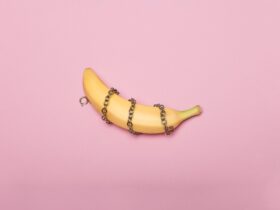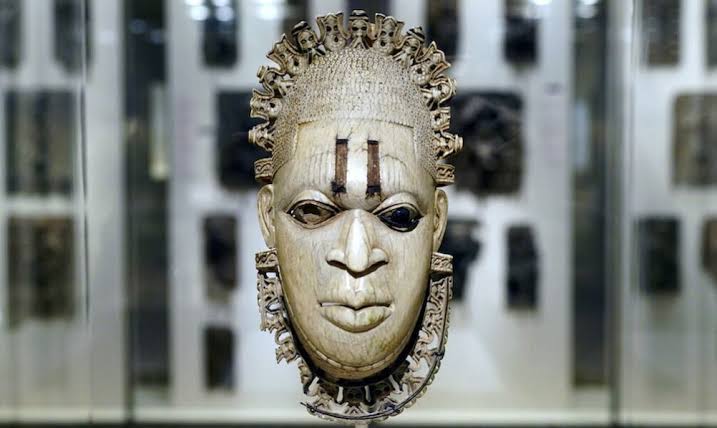Nigeria is home to many artworks which are handed from generation to generation. Most of these artworks are used for religious activities and some evolved over time to become decorative items. These artifacts were found in various sites by different archeologists and some were accidentally found by the inhabitants of the places. Most of these artifacts were looted by the Europeans, and some are kept in Museums here in Nigeria. Here is a list of some of the various artworks found in Nigeria:
Nok Art
Nok Village is situated in the Kwoi district in Southern Zaria province in Kaduna State. It is the most prolific archaeology site found in Nigeria that dates back to 500 BC. The first artwork was found by Bernard Fagg in the 1940s during the tin mining era. He discovered the following: hand axe, war axe, fluted gourd, serpent sculpture, farm tools, and monkey head in terracotta in places like Situ, Teruga, Isann, and South of Abuja. The farm tools are made of metals, the heads are made of terracotta or baked clay mixed with Mica, the pupils, nostrils, and lips are pierced, the hairstyles are elaborate with tresses or locks, and the profusion of beads around the necks and torsos and waists.

Ife Art
Ife is regarded as the cultural headquarters or the ancestral home of the Yoruba people. Ife Art is known for its naturalistic bronze, stone, and terracotta sculptures, which reached their artistic peak between 1100 and 1400 AD. These artifacts were found in notable sites like Ita Yemo, Iwinrin Grove, Lafogido, Odo Ogbe, and Wumonije compounds in Ife town. Some of the bronzes and terracotta heads are scarified or have striation on their faces. These artifacts are of life-sized heads with whiskers. The heads are bald and some are in figure form. These sculptures are made for royal purposes. Ife Art can be found in Ife Museum and Lagos Museum. Some of the discovered objects were looted abroad in the late 1990s.
Benin Art
Benin Art is the art from the kingdom of Benin, It is dated around the 15th century and has some similarities with Ife art. They include a range of religious objects, weapons, masks, animal heads, plaques, and other artifacts. They are made from bronze, brass, terracotta ivory, and wood. Benin artworks portray royal regalia. Most of Benin artworks are beaded on the necks and ankles, with marks on their forehead. Some of the artefacts were looted to London in 1897.
Igbo Ukwu
The ancient site of Igbo Ukwu is situated in the modern-day homelands of the Igbo people of Southern Nigeria. Igbo Ukwu bronze figures date back to the 9th century. They are one of the richest bronze artworks in Nigeria. The arts were accidentally discovered by Mr. Isaiah Anozie while digging a cistern in 1939. Subsequent archaeological excavations of the area led by Professor Thurstan Shaw were made. The objects recovered are a snail lamp, a bronze bowl and pearl-shaped bowl, a pendant with a ram’s head, and a human face with scarification. The Objects are unique and different from Ife and Benin arts in design.
/igbo_ukwu_vessel-56a01fb45f9b58eba4af1324.jpg)
Esie stone figures
Esie is a town near Ilorin in Kwara State. Esie is Known as the home of soapstone figures. The works are about 800 large pieces of carved soap stones. They are produced in various styles and they are male and female. The figures wear hats or designed head dresses with beads around the necks and wrists. The origin of the arts is unknown but people attribute it to evildoers turned to statues by God.

Tsoede Bronze
These statues were said to have been brought by Tsoede, the brother of Attah of Idah who founded the Nupe kingdom in the 16th century. The Tsoede bronze was found in places like Tada, Jebba, and Giragi in present-day Kogi state. The bronze figures are large-seated figures of men and animals, some of them are the largest cast bronze statues found in Sub-Saharan Africa. These statues are regarded as gods of fertility. They are ritually bathed by villagers to ensure prosperity.
Mbari Art
Mbari – among the Igbo people is the sacrifice offered to the earth goddess in thanksgiving for a favor received. It is a visual art form practiced by the Igbo people. It houses many life-sized painted figures sculpted in mud to appease gods and goddesses.

Ibibio Art
Ibibio is a community situated in Akwa Ibom and Cross River states. Their artworks are mostly ancestral figures and mask carvings in wood. They are composed of geometrical forms mostly cones, spheres, and cylinders. The faces are bearded and attached to the body by thick necks. They have wide shoulders and arms. The torsos are narrow and the abdomens are round. The figures found in Oron are worn by boys during festivals.














